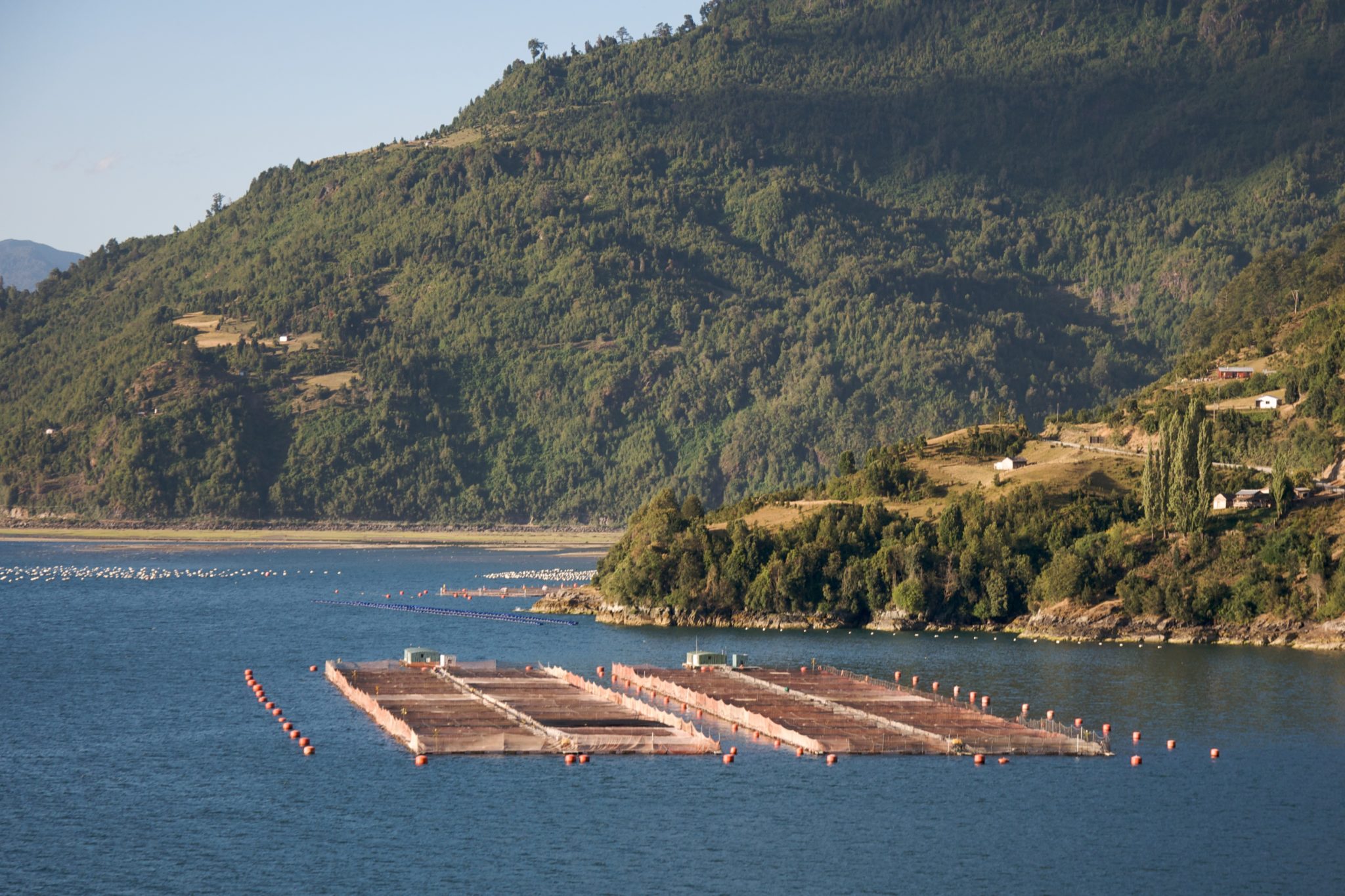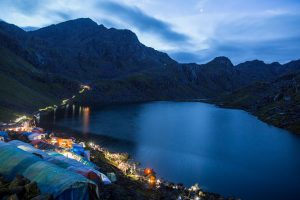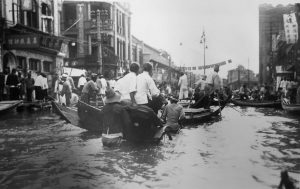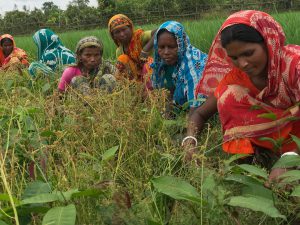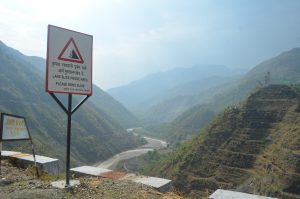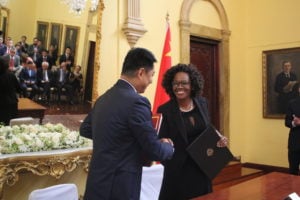Following rapid expansion in neighbouring Chile, Argentina is looking to advance the installation of salmon farms despite the risks intensive production present to its unique and sensitive biodiversity.
The Southern Cone countries are responding to increased demand for salmon globally, with China a booming new market. The Asian country doubled imports from Chile in the first half of this year, according to official figures.
“China is a very significant market and we are optimistic that it will continue to grow. Consumption is increasing and salmon is already a part of their diet,” said Arturo Clement, president of SalmonChile, an industry association, adding; “For many years, we have been waiting for this to happen.”
Argentina spawns salmon industry
With a close eye on this trend, Argentina has initiated feasibility studies to begin production in the Beagle Channel, a strait in the southernmost Tierra del Fuego region of South America. The first step will be to evaluate potentially suitable sites for production, according to spokespersons from the Argentine Undersecretary of Fisheries and Aquaculture.
However, biodiversity experts and environmental groups see these studies as a mere formality that will be overlooked by the interest in expanding production in Patagonia, which has lingered for years. They also claim the introduction of salmon farms violates the UN’s Convention on Biological Diversity, an international agreement signed by Argentina and Chile prohibiting the introduction of ‘exotic’ species.
Patagonia possesses unique geographical conditions and great environmental diversity. Intense industrial activity involving an exotic species is not compatible with this
“There is a good chance that the salmon farms will be set up. They have the capital and the interested investors. However, we are extremely concerned that moving forward with its development would cause irreversible damage to the environment,” said Alexandra Sapoznikow, coordinator of the Forum for the Conservation of the Patagonian Sea and Areas of Influence.
The introduction of salmon would impact invertebrate organisms unique to the region, such as cold water corals and sponges, experts said.
In Chile and Norway, the world’s leading salmon producers, fish live on a controlled diet based on soybean meal which, when excreted, changes the sea’s chemical composition.
“Each cage can house between 30,000 and 50,000 salmon which defecate all day and contaminate the seabed. The faeces decompose and produce nitrogen and oxygen, altering the quality of the water and leading to the flowering of toxic algae,” said Juan Carlos Cárdenas, director of Chilean NGO EcoOceános.
Furthermore, salmon often escape from cages, threatening native fish.
“Salmon is not a native species and that brings problems. They are carnivorous, they devour other species in the area, and become predators,” said Estefanía González, oceans coordinator for Greenpeace Chile.
She added: “Patagonia possesses unique geographical conditions and great environmental diversity. Intense industrial activity involving an exotic species is not compatible with this.”
Argentina and Chile would do well to learn from past experience. A century ago, they introduced trout to Patagonian rivers, primarily for recreational fishing. Yet uncontrolled breeding meant numbers of the invasive species grew rapidly, leading to devastating impacts on local aquatic ecosystems.
Chile: regional salmon powerhouse
The majority of pink salmon eaten today in Latin America comes from Chilean farms. The country exports two main species: Salmon salar (better known as Atlantic salmon) and the Coho salmon (known as Pacific salmon).
Offical figures show that Chile now exports 820,000 tons of salmon per year, worth some US$4.7 billion. The US, Japan, Brazil and Russia are the largest export destinations, with China growing in prominence having imported 24,000 tons in the first half of this year.
37%
of the world’s seafood and aquatic products are consumed by China
Chilean exports to China are expected to grow in tandem with China’s consumption of other seafood products. Today, China consumes 37% of the world’s seafood and aquatic products, a figure that is expected to exceed 50% within the next decade. But there is an inverse relationship with the quality of food imported.
“Chile offers a cheaper and poorer quality salmon than Norway,” said Alex Muñoz, director for Latin America of National Geographic’s Pristine Seas initiative. “Sales to more demanding markets such as the US are falling, while exports to countries with weaker regulations are steadily growing.”
Other common practices used in salmon production worry environmental groups. Cages, for example, are surrounded by nets painted with heavy metals such as copper to prevent the adhesion of marine organisms. These substances are highly toxic and are also harmful to biodiversity.
Dyes are used to make the salmon meat pink since it is naturally white when produced industrially. Wild salmon, on the other hand, feed on shrimp and crabs, which gives it its particular colour.
Antibiotic consumption
Industrial salmon production can also pose health risks for consumers as a result of exposure to high levels of antibiotics, especially in Chile.
Oceana, an NGO, estimates that by weight, Chile uses almost 700 times more antibiotics than Norway to produce salmon. While Chile produced 727.8 tonnes of salmon using 382.5 tonnes of antibiotics in 2016, the latest year for which data is available, Norway produced nearly twice as much salmon (over 1,233 tonnes) using just 523 kilos, or half a tonne, of antibiotic substances.
According to the Chilean salmon association, salmon reaches consumers without antibiotics, which are used as growth promoters and not to prevent diseases. They say producers must respect a grace period, during which time fish metabolise the chemical and expel it from the body. However, this does not always happen and antibiotics ingested through eating salmon can generate resistance to them.
For this reason, the World Health Organisation (WHO) and the Food and Agricultural Organisation of the United Nations (FAO) have called on companies to use antibiotics responsibly.
“An exorbitant amount of antibiotics is used and there are no regulations controlling their use. The industry gives healthy salmon antibiotics to keep them from getting sick. In addition, there are problems with inspection and control, which should ensure that the grace period is being respected,” said Cárdenas.
“The consumers do not know what they are eating,” he warned.
China introduced imports of Chilean salmon following a half-decade diplomatic conflict with Norway. Meanwhile, concern over food safety has become a hot topic in China, given new regulations enabling trout to be labelled and sold as salmon.
But while Chile and Argentina look to capitalise on the growth in consumption amid looser regulations in China, other parts of the world are scaling back imports.
Large supermarket chains in the US and Canada have in recent years rejected imports of salmon from Chile because of their high levels of antibiotics and food safety concerns. Moreover, Washington State, in the US recently banned the installation of cultivation centres due their environmental impacts.
For Muñoz, ignoring these moves would be disaster:
“Argentina’s Patagonia is one of the last wild and pristine ecosystems in the world. The country would make a monumental mistake if salmon farming were to be developed. It is an exotic and invasive species which generates an environmental problem that is difficult to solve.”
